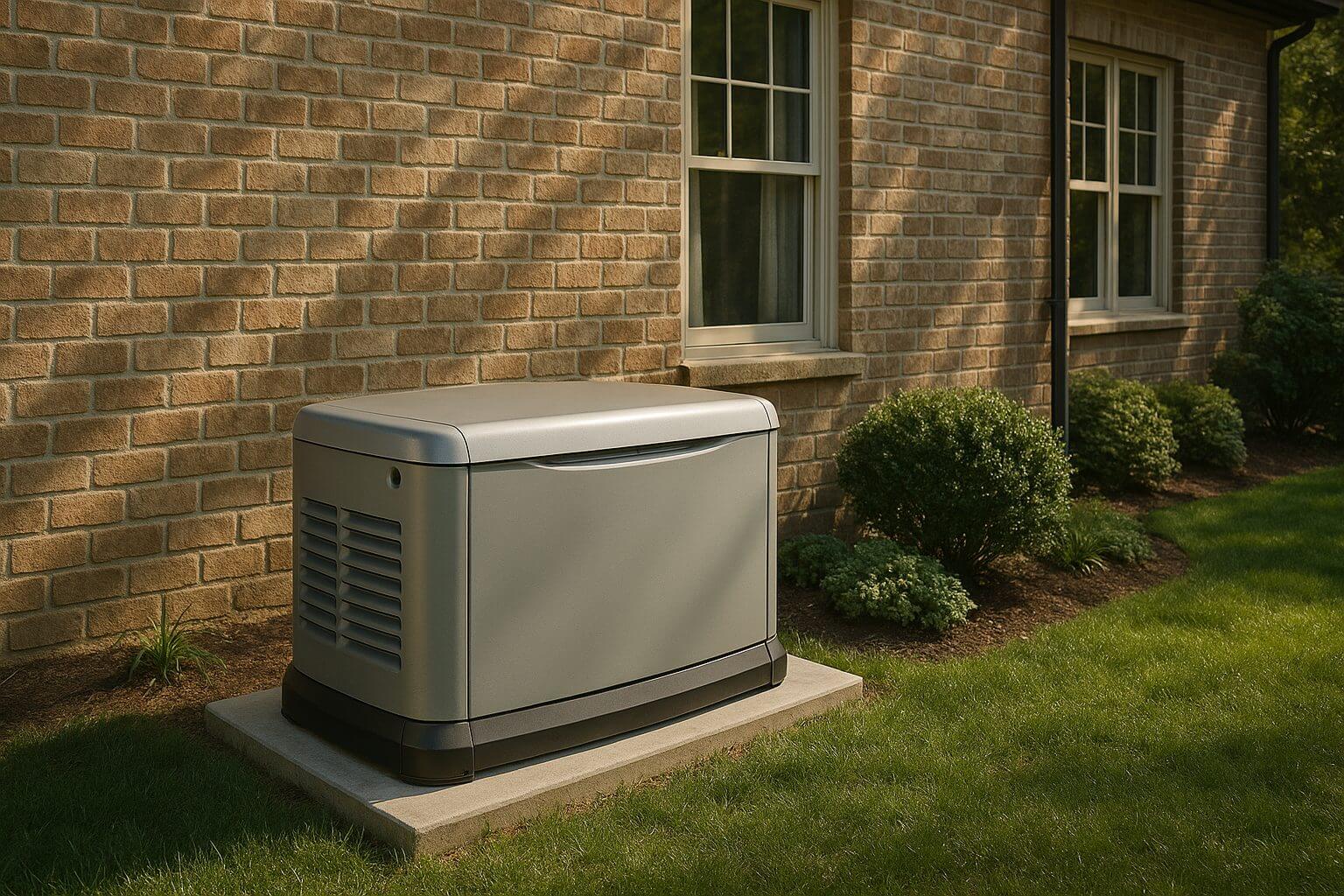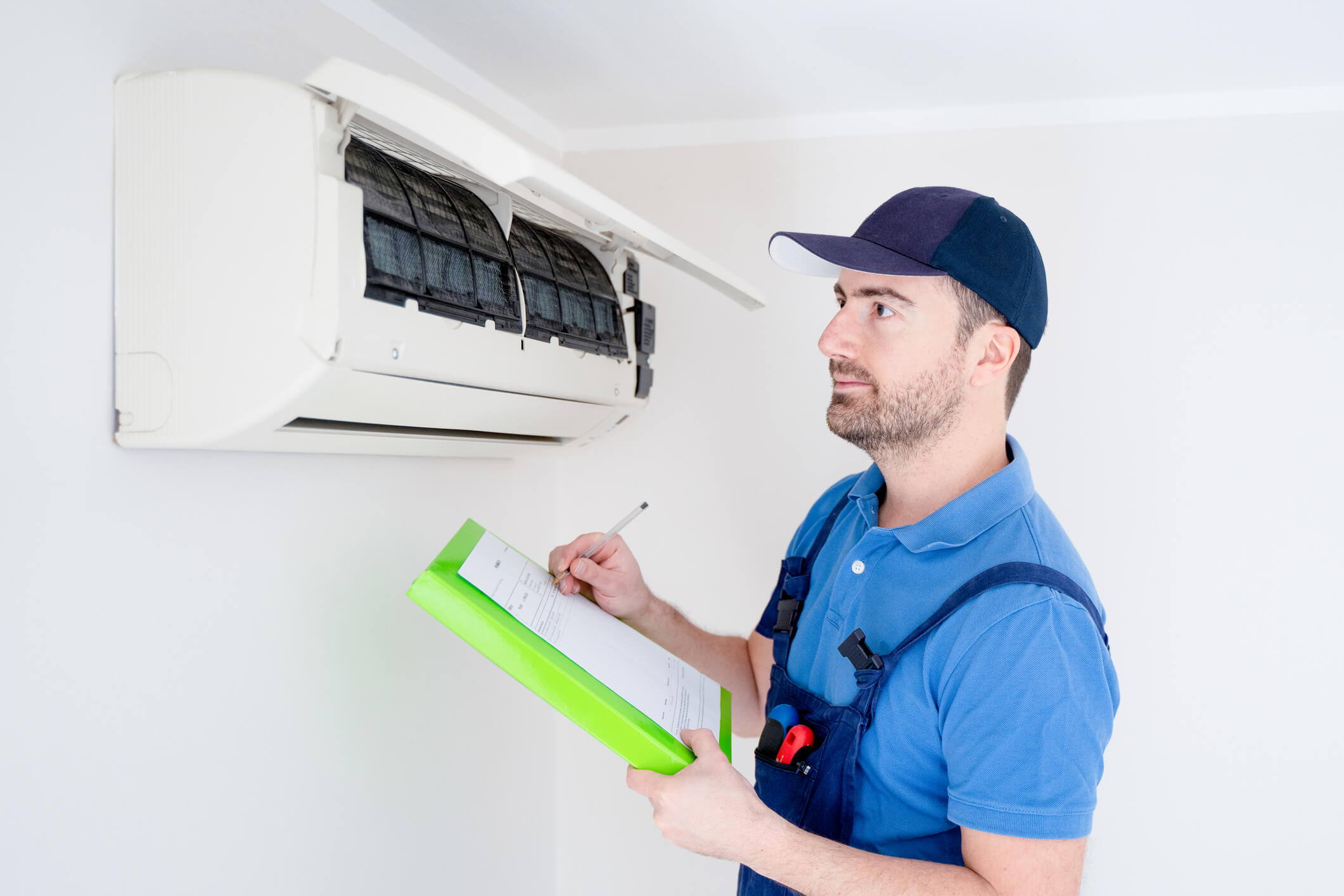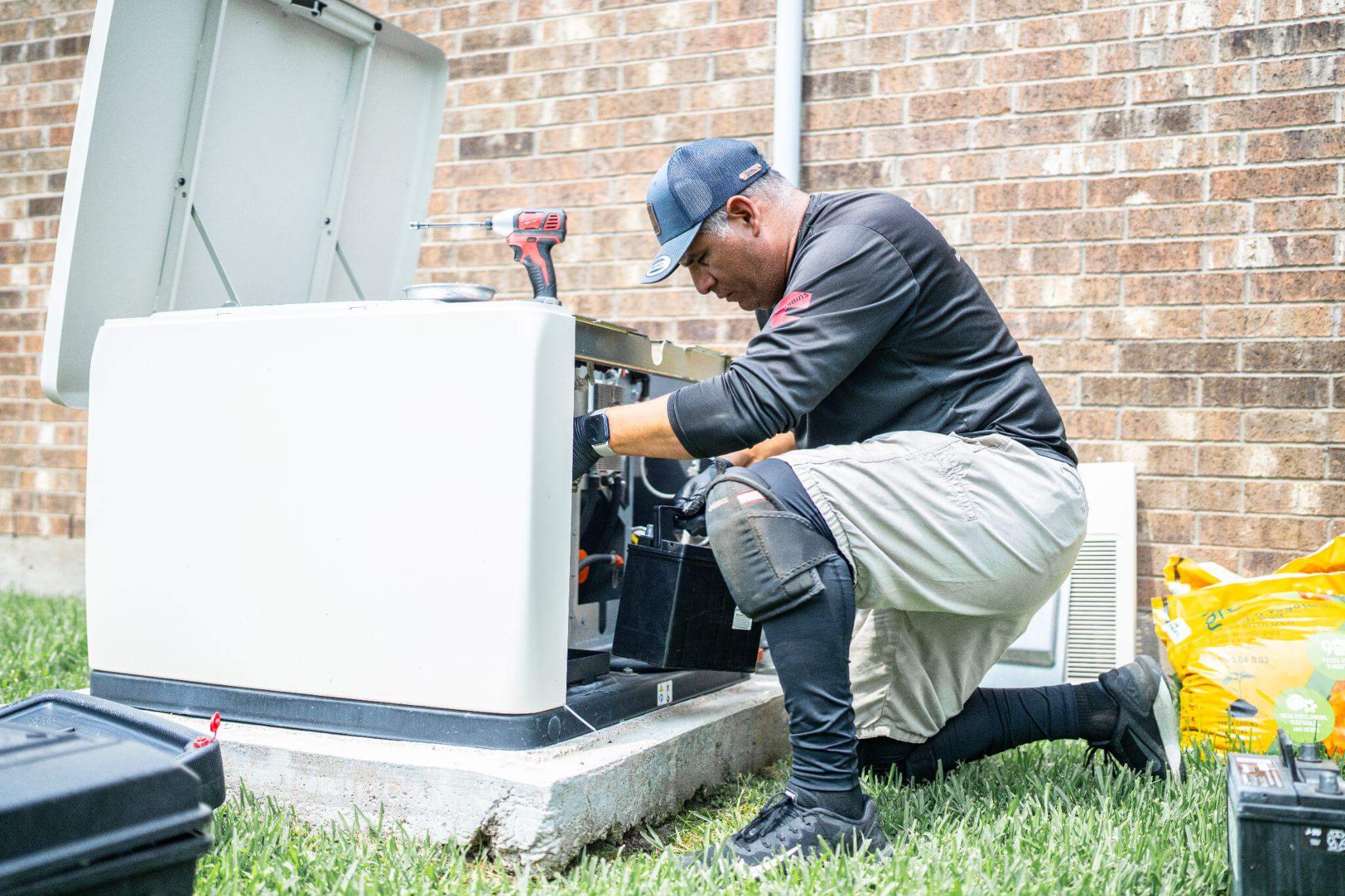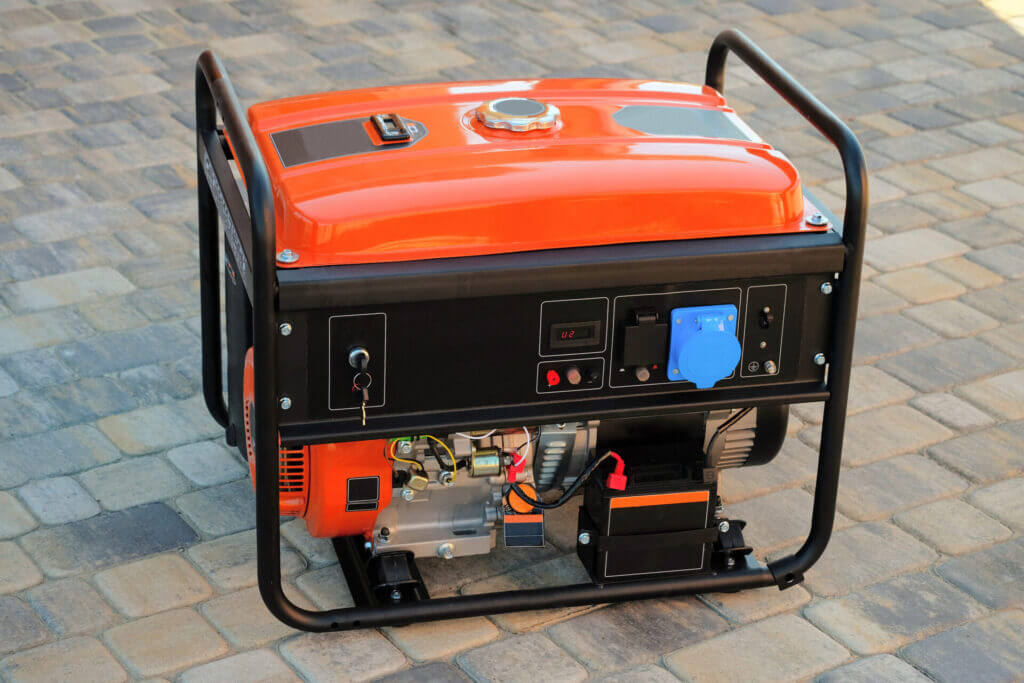Are you doing a generators project?
Modernize can pair you with three to four pros in your area, so you can compare options and save time and money.
- Understanding the Concern
- Why Natural Gas Generators Produce Carbon Monoxide
- How Carbon Monoxide Affects the Body
- The Scope of the Risk
- The Hidden Risk in Enclosed and Semi-Enclosed Spaces
- Safe Placement and Ventilation Practices
- Additional Safety Measures for Homeowners
- Seasonal Considerations
- Emergency Response if CO Levels Rise
- Debunking Common Myths About CO and Natural Gas Generators
- The Bottom Line
Understanding the Concern
Natural gas generators are one of the most popular standby power options for homeowners. They connect directly to your home’s gas line, which means no hauling fuel or worrying about storage, and they can run for days on end during extended outages.
Despite their convenience and cleaner-burning reputation, they still produce carbon monoxide (CO) — a dangerous, invisible gas that can be lethal in high concentrations. Many homeowners assume “cleaner” means “risk-free,” but that’s not the case. Understanding how CO is produced, why it’s dangerous, and how to operate your generator safely is essential.
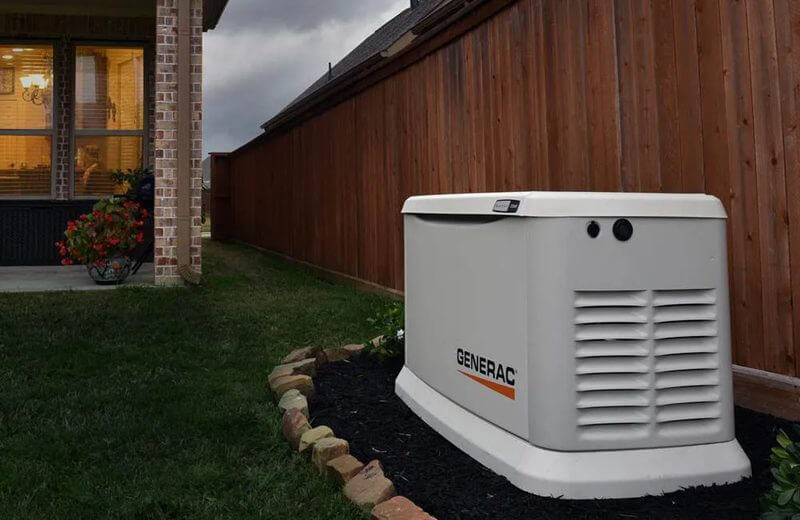
Why Natural Gas Generators Produce Carbon Monoxide
Any time fuel is burned — whether it’s natural gas, propane, gasoline, or diesel — the combustion process creates carbon monoxide.
In a natural gas generator, the internal engine burns fuel to produce electricity. While natural gas burns more cleanly than gasoline or diesel, it still creates CO as a byproduct. Unlike smoke, CO has no smell or color, so you can’t detect it without specialized equipment.
Fuel Type Comparison
| Fuel Type | CO Output Level | Notes on Risk |
|---|---|---|
| Gasoline | High | Common in portable generators |
| Diesel | High | Slightly less than gasoline, still dangerous |
| Propane | Medium | Burns cleaner but still produces CO |
| Natural Gas | Medium | Cleaner combustion, but still hazardous indoors |
Bottom line: no matter the fuel, improper operation or placement can cause deadly CO buildup.
How Carbon Monoxide Affects the Body
Carbon monoxide binds to hemoglobin in the blood much more effectively than oxygen. This reduces your body’s ability to transport oxygen to cells and vital organs.
Common early symptoms include:
- Headache
- Dizziness
- Weakness
- Nausea or vomiting
- Confusion or difficulty concentrating
In severe cases, people may lose consciousness or die without warning. Because symptoms mimic other illnesses, CO poisoning can be overlooked until it’s too late, especially if it happens while people are asleep.
The Scope of the Risk
According to the Consumer Product Safety Commission, portable and standby generators are responsible for hundreds of CO-related deaths and thousands of hospital visits in the U.S. each year. Many of these incidents occur during major storms, heat waves, or extended outages when generators are in heavy use.
The Hidden Risk in Enclosed and Semi-Enclosed Spaces
One of the most dangerous misconceptions about natural gas generators is that they can be used “near” the home or in partially enclosed areas.
Examples include:
Find the Right Contractor for Your generators Project
Whether you’re ready to begin your project now or need some expert advice, our network of contractors are here to help. With a few simple questions, we’ll find the best local professionals for you
- Garages with doors open
- Carports or covered patios
- Basements or crawl spaces
Even with some airflow, CO can accumulate quickly and drift into your home through windows, vents, or small openings.
Safe Placement and Ventilation Practices
- Place It Outdoors: Always install and operate your natural gas generator outside. Choose a stable location that won’t flood and remains clear of debris, vegetation, or snow buildup.
- Maintain Adequate Distance: Safety experts, including the U.S. Consumer Product Safety Commission, recommend placing generators at least 20 feet away from any structure to prevent exhaust from drifting indoors.
- Mind the Wind Direction: Position the generator so exhaust is carried away from your home. Wind patterns can change during storms, so placement should be planned with flexibility in mind.
- Plan for Permanent Venting: If your generator is part of a professionally installed standby system, ensure the exhaust system is designed to vent upward or away from walls and living spaces.
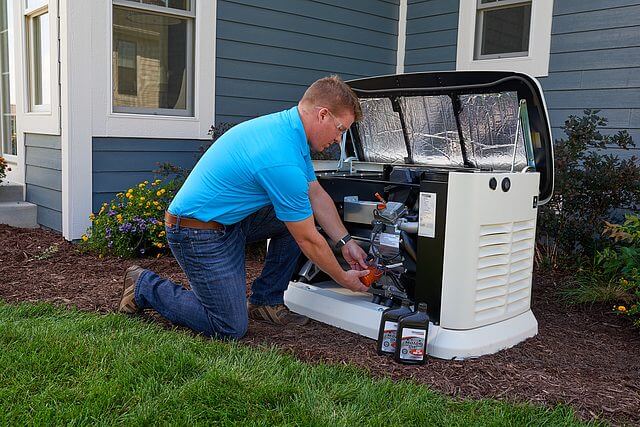
Additional Safety Measures for Homeowners
- Install Carbon Monoxide Detectors: Place detectors on every level of your home, especially near bedrooms. Choose models with battery backup so they function during outages. Test regularly and replace batteries as needed.
- Schedule Professional Installation: A licensed technician can ensure your generator meets safety codes, is placed correctly, and has an exhaust setup that directs fumes safely away from the home.
- Stay on Top of Maintenance: Clogged air filters, damaged spark plugs, or blocked exhaust outlets can increase CO output. Follow the manufacturer’s recommended maintenance schedule, which typically includes:
- Annual inspection
- Air filter replacement
- Exhaust system check
- Oil changes (if applicable)
- Educate Your Household: Make sure everyone in your home understands the signs of CO poisoning, knows where the generator is located, and is aware of your safety protocols.
Seasonal Considerations
- Winter: Homeowners often place generators closer to the house to protect them from snow or ice, but this can trap exhaust and increase CO risk.
- Summer: Running air conditioning during hot weather places heavier loads on the generator, increasing fuel use and CO output. Extra ventilation is key.
Emergency Response if CO Levels Rise
If your CO detectors sound an alarm or anyone develops symptoms of poisoning:
- Leave the house immediately and move to fresh air.
- Call 911 or your local emergency number.
- Seek medical attention for anyone experiencing symptoms.
- Do not re-enter the home until emergency responders confirm it’s safe.
Debunking Common Myths About CO and Natural Gas Generators
“They produce less CO, so they’re safe indoors.”
False. Even “cleaner” fuels produce dangerous CO levels in enclosed spaces.
“Opening a garage door is enough ventilation.”
False. CO can pool inside and seep into your home even with a door open.
“If I can’t smell it, it’s not there.”
False. Carbon monoxide is odorless, tasteless, and invisible — only a detector can alert you.
The Bottom Line
Yes, natural gas generators produce carbon monoxide. While they are one of the most convenient and reliable backup power solutions, they must be installed, operated, and maintained with safety in mind.
The combination of proper outdoor placement, regular maintenance, CO detection systems, and household education will protect your family from this invisible danger. Used correctly, a natural gas generator can give you peace of mind during outages without putting your home at risk.
Find the Right Contractor for Your generators Project
Whether you’re ready to begin your project now or need some expert advice, our network of contractors are here to help. With a few simple questions, we’ll find the best local professionals for you
Reviews from Real Homeowners
Welcome to Homeowner Resources! We are the Modernize blog. Modernize pairs more than 3 million homeowners a year with pre-vetted contractors in their area. This blog started because we believe homeowners should know everything about their homes, from how their HVAC works to which front door colors they might love. On Homeowner Resources, you can find information on every part of your home, right down to how you can negotiate with contractors to get the best price. Here's more about the blog.
Need a contractor? Learn more about how Modernize finds the right pro for you.
